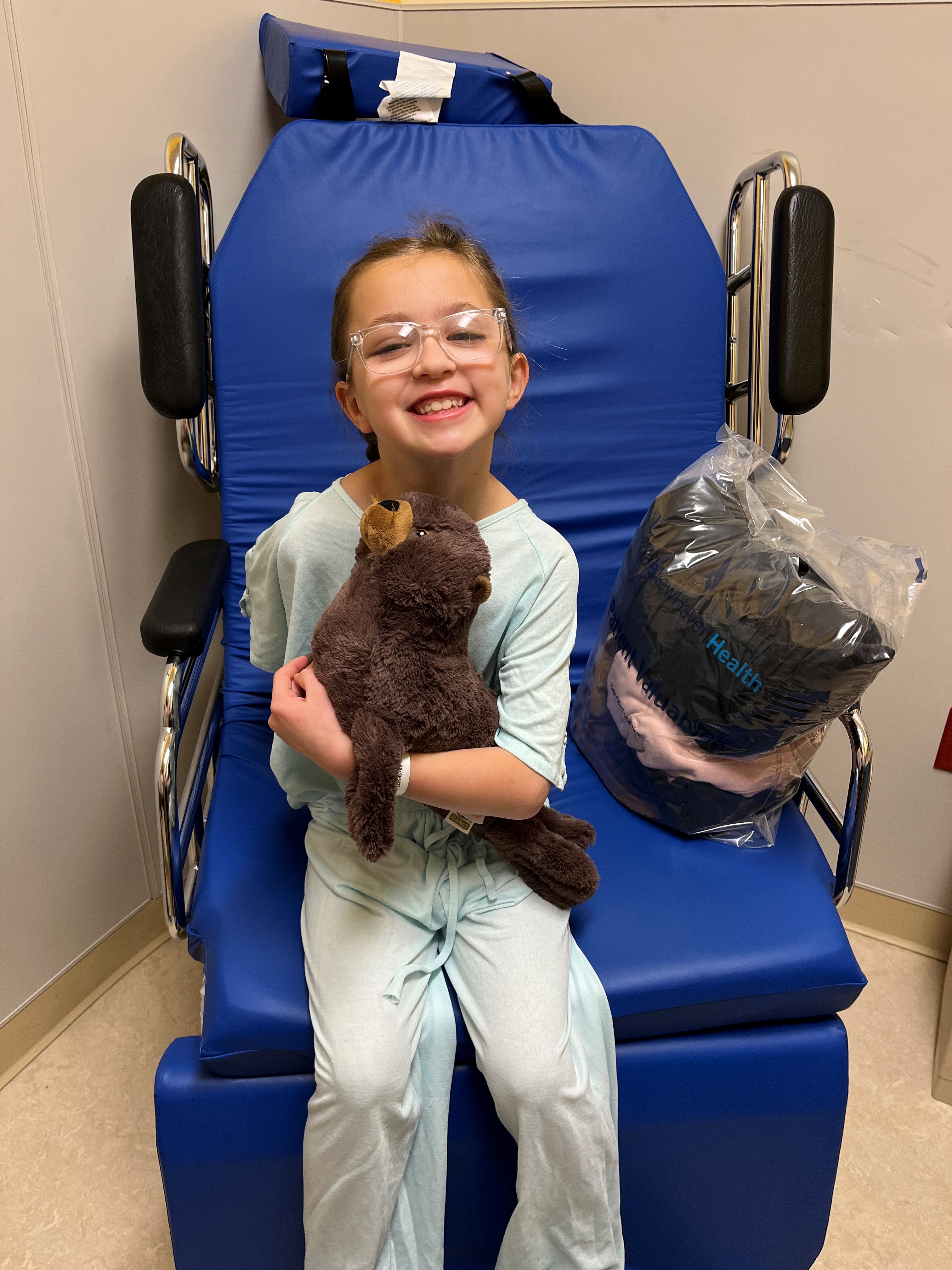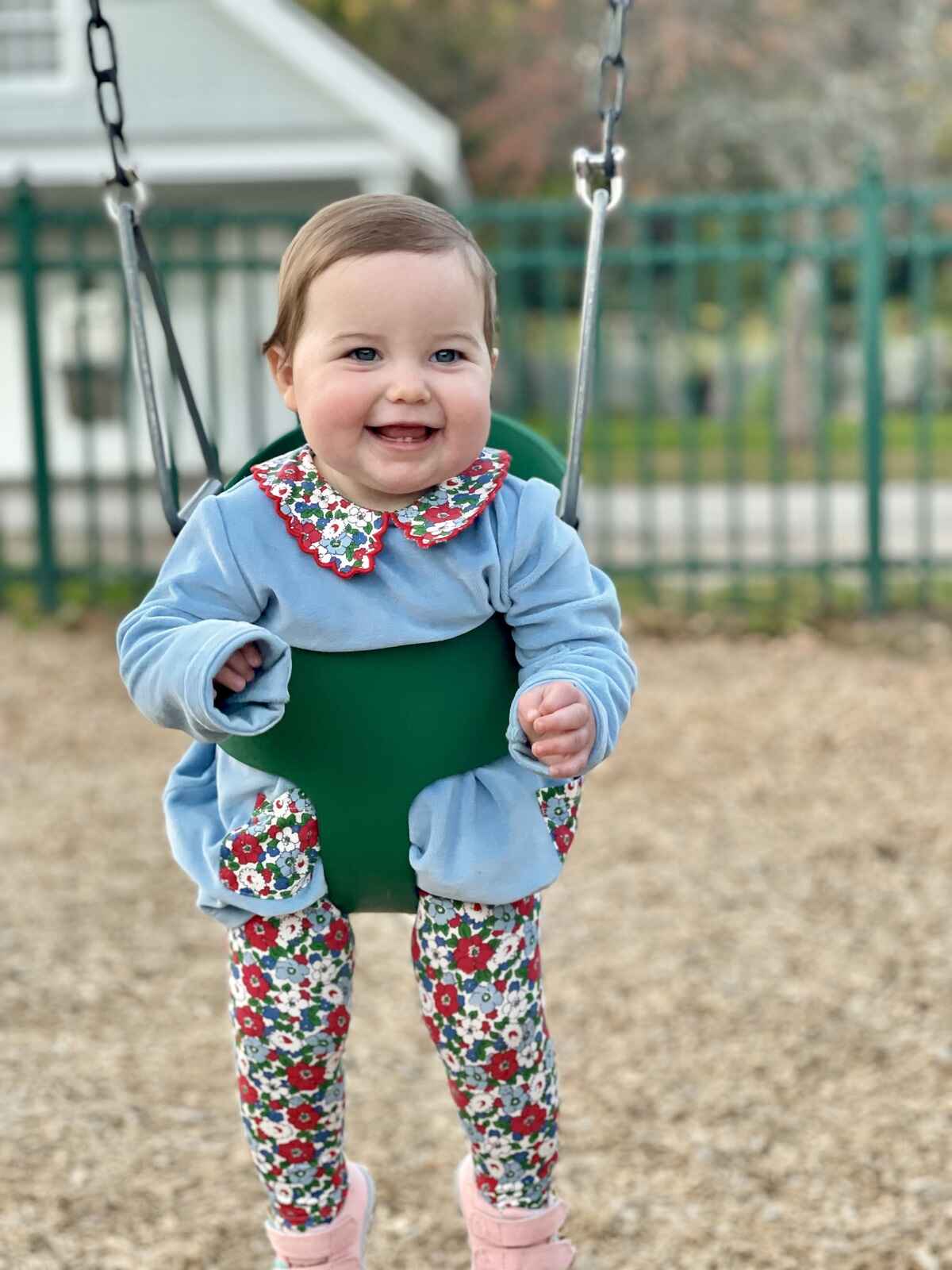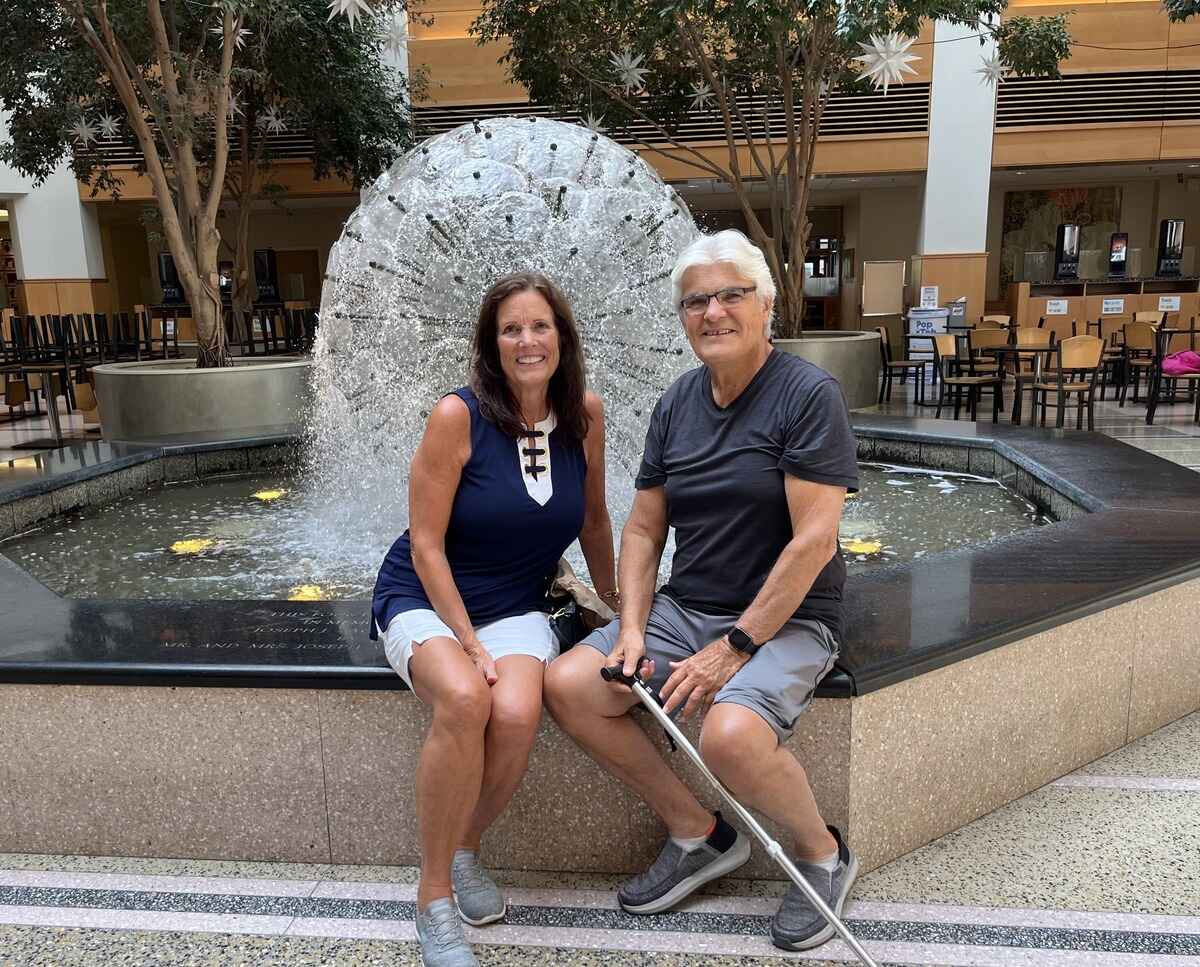Dedicated to tomorrow's fight
In 2012, Mary Di Gioia, a grandmother of four was working as a social worker when she began experiencing abdominal pain. “I ignored it for a while,” said Ms. Di Gioia, who has since retired. But when the discomfort persisted, she went for an ultrasound and was eventually diagnosed with endometrial cancer.
Her prognosis was not good. Endometrial cancer is the most common gynecological cancer in the U.S.— more than 60,000 women will develop it this year alone and more than 10,000 will die—“but the majority of tumors are curable,” said Alessandro Santin, MD, Professor of Obstetrics, Gynecology, & Reproductive Sciences and Co-Leader of Smilow Cancer Hospital’s Gynecologic Oncology Program.
Ms. Di Gioia’s cancer, however, was a different type of endometrial cancer known as uterine serous carcinoma (USC), which Dr. Santin describes as a “biologically aggressive, type 2 endometrial cancer.” How aggressive? While USC comprises only 10 percent of endometrial cancers, it ends up killing more than 40 percent of patients.
Mary Di Gioia, however, is thriving, and is now well into her sixth year since her diagnosis, enjoying her husband, children, and four grandchildren, going to the gym, and happy to be alive. “She is a lucky woman,” said Dr. Santin. “I call her my miracle lady.”
Yet Ms. Di Gioia’s survival had little to do with miracles, and everything to do with a novel treatment regimen developed by Dr. Santin at Smilow Cancer Hospital, a regimen that nearly didn’t see the light of day.
In 2002, Dr. Santin and his team were the first to identify a striking characteristic in USC tumors: They showed a very high expression of a gene known as human epidermal growth factor receptor 2, more commonly known as HER2/neu. This was still in the relatively early days of immunotherapy treatment for cancer, but HER2/ neu was already known in breast cancer. About 15 percent of women with breast cancer test positive for tumors with HER2/neu. These women did better, it seemed, when given a combination of chemotherapy and an antibody known as trastuzumab—also known as Herceptin. Herceptin is an antibody, much like the antibodies we produce to defend ourselves against infection.
When everything is functioning well, antibodies can recognize a virus, bind to it, and destroy it. In the same way, Herceptin was developed as a targeted therapy to specifically recognize HER2/neu, a protein that conveniently exists at high levels only in some cancer tumors and not in normal cells. Herceptin enables the immune system to bind to HER2/neu tumors and obliterate them like heat-seeking missiles, while not harming normal cells. “This discovery completely changed the way we deal with breast cancer,” explained Dr. Santin. “You give women with HER2-positive breast cancer Herceptin and they respond.”
When Dr. Santin discovered that there was also an amplification of the HER2/neu gene in uterine serous carcinoma, “I proposed a new paradigm in the treatment of the disease—that we consider treating it with chemotherapy plus Herceptin, just like we do with breast cancer. We already had a targeted therapy that worked, so it made sense.” The trouble is, the National Cancer Institute and the Gynecologic Oncology Group had already done clinical trials using Herceptin in patients with endometrial and ovarian cancers, with lackluster results.
Yet, Dr. Santin was unfazed. “I knew about the results, but I believed the studies hadn’t been well designed, mostly because they weren’t selecting the right patients,” he said. Dr. Santin was certain that he could design a better study, one that might offer a more effective treatment for women with USC. The medical community, to put it mildly, was skeptical. “I was attacked,” he recalled. “People accused me of having a strong imagination.” But, Dr. Santin persisted. His theory was that in the previous studies, many patients didn’t have a high enough expression of the HER2/neu protein. Prior studies had also used Herceptin alone to treat USC, rather than combining it with chemotherapy, which was ineffective. “In our lab, we found that uterine serous carcinoma was characterized by tumors that were highly heterogeneous—that is, they contained tumor cells expressing HER2/neu but also tumor cells without high expression of the HER2/neu gene that Herceptin couldn’t destroy,” he explained. As a result, those tumors continued to grow.
Dr. Santin believed that using both Herceptin and chemotherapy (specifically carboplatin-paclitaxel) would target both the HER2/neu tumors and the non-HER2/neu tumors, increasing patients’ chances of long-term survival. It wasn’t until August 2011 that Dr. Santin, with a small grant from Genentech Roche, the manufacturer of Herceptin, was able to launch an investigator initiated prospective randomized phase II trial comparing the effectiveness of using only the standard chemotherapy for USC versus a combination of chemotherapy and Herceptin in patients with advanced or recurrent USC who tested positive for amplified HER2/neu.
“With all the information produced in my research lab studying these aggressive endometrial cancers, I was finally able to show why the earlier studies had failed—they had treated the disease without knowing the underlying biology,” he explained. “I suspected that with a different study design, we could succeed.” The study, done at Smilow Cancer Hospital from 2011 to 2016 and led nationally by Dr. Santin, involved 15 academic institutions in the U.S., eventually enrolling 61 women over the course of the six years. Mary Di Gioia was one of those women.
“Dr. Santin did gene sequencing on my tumor, which is routine now, but wasn’t back then,” she said. Her tumor fit the profile that Dr. Santin was looking for: significant amplification of the HER2/neu gene or, a measure of 3+ for HER2/neu. Initially, however, Ms. Di Gioia was randomized to the control group of the study. She would receive only chemotherapy.
“That was disappointing, but Dr. Santin reassured me that if things didn’t go well, he would include me in the arm of the trial that included Herceptin,” she said. Things did go well, at least, at first. Ms. Di Gioia did six courses of chemo, followed by vaginal radiation. “I felt great. I exercised every day, and led a completely normal life,” she said. Then, in 2015, a follow up PET scan indicated that her cancer had returned, this time in her colon. Optimistic, she had surgery, and, she said, “I went on with my life.” Within a year, however, a CAT scan revealed yet another tumor, also in her colon. “That was the point when Dr. Santin said it was time for Plan B,” she recalled.
“Instead of treating me with just chemo again, we began infusions of Herceptin every 3 weeks.” That was a year-and-a-half ago. Ms. Di Gioia is now going strong, her tumor hasn’t grown, and her health remains stable. “I’m a very blessed lady, and that’s the truth,” she said. Indeed, only about 5 percent of patients with Ms. Di Gioia’s advanced stage of USC—classified as 4B—are alive after five years. Other women who received both chemotherapy and Herceptin in Dr. Santin’s study did well, too, living significantly longer than women in the control group without their cancer progressing.
After Dr. Santin’s results were published in the July 2018 issue of the Journal of Clinical Oncology, the medical world took notice. The National Comprehensive Cancer Network (NCCN) guidelines, which are the recognized standard for clinical policy in cancer care, were revised for women with advanced and recurrent HER2/neu-positive USC to chemotherapy plus Herceptin. “I have patients who have been taking Herceptin for three and four years now,” said Dr. Santin. “They don’t want to stop. They feel great, and they are able to tolerate it in a fantastic way.” That is certainly true for Mary Di Gioia, who says she feels wonderful, both physically and emotionally. “I can’t say that I’m thrilled to have gotten cancer, but I have grown from the experience,” she said. “I credit Dr. Santin with that. He has taught me how to live with cancer, with the emphasis on the word ‘live’ rather than on ‘cancer.’ For that, I’m eternally grateful.”




